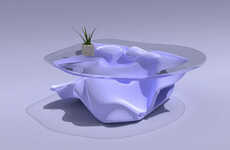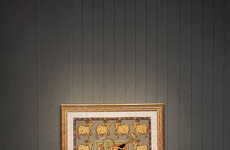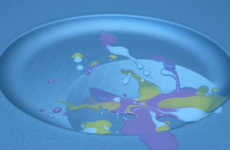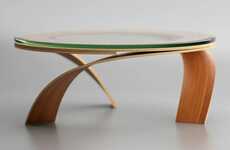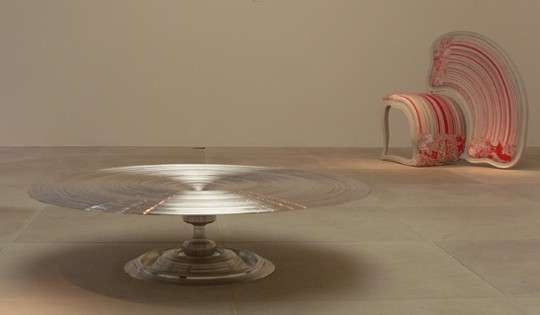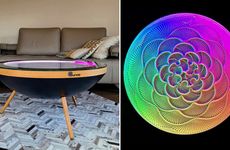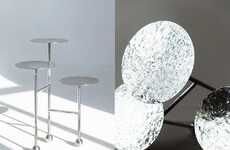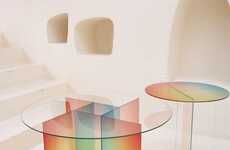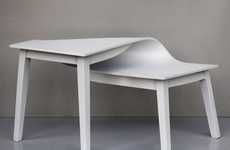
Artist Sebastian Brajkovic Freezes the Motion of Time in Furniture
Katie Cordrey — January 2, 2010 — Art & Design
References: sebastianbrajkovic & design.nl
Brajkovic table designs are meditations on time and space that combine stretching and stilling with familiar reference points. They have a lot to say.
Brajkovic’s low aluminum Lathe table seems to be thrown, like a ceramic pot, but it was computer designed and cut using a computer numerical controlled lathe. An exaggerated pedestal base profile retains circular whirls in the table top that make the table appear to be spinning, just as it did on the lathe bench during creation.
The Dutch designer’s Sinking Glass table is an interpretation of sunken objects in fog – half underwater and half exposed. The glass acts as a simile for level stilled water and has implications as a metaphor for global warming.
Though Sebastian Brajkovic’s Lathe V chair has been recently purchased by New York’s Museum of Arts and Design for their permanent collection, but the museum, like many others, is missing the innovation and beauty of Brajkovic’s tables.
Brajkovic’s low aluminum Lathe table seems to be thrown, like a ceramic pot, but it was computer designed and cut using a computer numerical controlled lathe. An exaggerated pedestal base profile retains circular whirls in the table top that make the table appear to be spinning, just as it did on the lathe bench during creation.
The Dutch designer’s Sinking Glass table is an interpretation of sunken objects in fog – half underwater and half exposed. The glass acts as a simile for level stilled water and has implications as a metaphor for global warming.
Though Sebastian Brajkovic’s Lathe V chair has been recently purchased by New York’s Museum of Arts and Design for their permanent collection, but the museum, like many others, is missing the innovation and beauty of Brajkovic’s tables.
Trend Themes
1. Time and Space - Opportunity for disruptive innovation by reimagining furniture designs that stretch and still with familiar reference points.
2. Exaggerated Pedestals - Opportunity for disruptive innovation in creating table designs with pedestal bases that retain circular whirls, creating an illusion of movement.
3. Interpretation Through Materials - Opportunity for disruptive innovation by using materials such as glass to create furniture that symbolizes abstract concepts like sunken objects or global warming.
Industry Implications
1. Furniture Design - Opportunity for disruptive innovation by incorporating time and space elements into furniture designs that captivate and engage consumers.
2. Museums and Art Galleries - Opportunity for disruptive innovation for museums to showcase innovative table designs that are not just limited to chairs or other conventional forms of art.
3. Sustainable Design - Opportunity for disruptive innovation in creating furniture designs that reflect and draw attention to environmental issues like global warming.
1.9
Score
Popularity
Activity
Freshness


